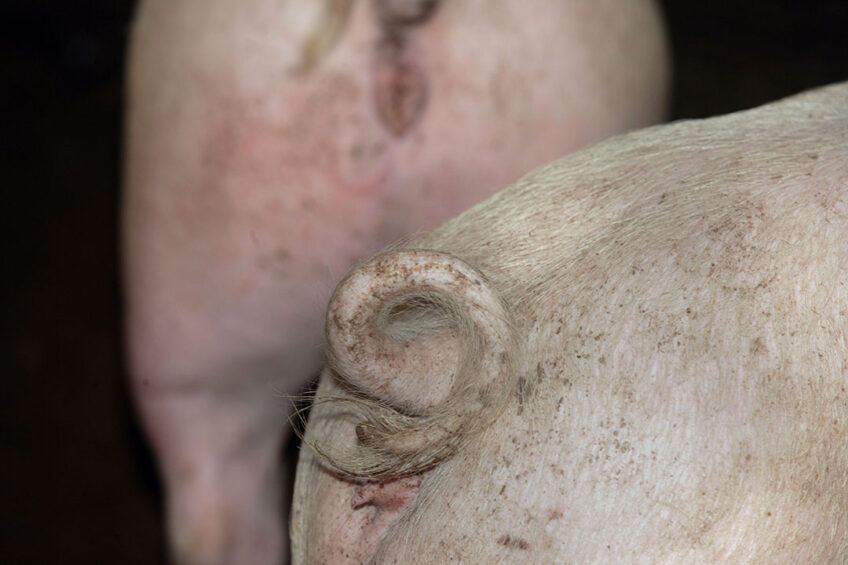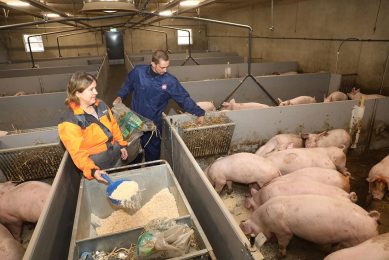What are the current challenges to produce pigs with long tails?

What are the new developments in the world of animal nutrition? Last year, pharmacological levels of zinc oxide had to be phased out in diets for weaner pigs in the EU. These days, the feed formulation business is looking at the next challenges. One of them includes keeping pig tails long. An interesting dilemma is at the horizon, writes animal nutrition expert Dr Francesc Molist.
Producing pork following sustainability and welfare standards is increasingly seen as a prerequisite for the consumers and retailers in the EU. The swine sector has already made huge efforts in the past years to first reduce the antibiotic use and more recently to reduce the utilisation of therapeutic levels of zinc oxide (ZnO) to avoid antimicrobial resistance and environment pollution.
Pig diets with low levels of ZnO
After almost a year where all the diets in the EU are produced with low levels of ZnO, it seems that nutritionists, vets and farm managers have found the solution for most of the farm to keep animals healthy without losing too much productivity. Diets have been reformulated following low crude protein concepts and also diluting the diets to help piglets to overcome the stress associated with weaning.
Efforts are needed from all the partners in the chain
Neonatal mortality and low levels of sensory input
The current main welfare issues for pig producers are amongst others neonatal mortality and low levels of sensory input (e.g. stereotypic and damaging behaviour). In line with these, the next step for the swine industry on the EU welfare agenda is to have the sows loose in lactation and producing pigs with long tails. However, to help the sector to produce pigs with long tails efforts are needed from all the partners in the chain. What is also essential is to compensate the pig producers for the extra costs they are making for delivering pigs with intact long tails.
Holistic approach is necessary for good piglet diets
Again, similar to producing piglets without therapeutic levels of ZnO, to be successful in producing pigs with long tails, a holistic approach is necessary that may differ from farm to farm. Management should be improved with the right density and enough space (i.e. to rest, to move around, to eat, and to drink) per pig; the use of proper enrichment material; the right environment with special focus on ventilation, but probably also nutrition may will play a role. Although tail damaging behaviour is commonly seen as a problem during the grower-finisher phase, preventing the tail-in-mouth behaviour (the precursor of damaging behaviour) from young age is key.
The level of crude protein in the diet as well as the type and level of fibre in the diets plays an important role
From the trials that we have performed at Schothorst Feed Research, it seems that the level of crude protein in the diet as well as the type and level of fibre in the diets plays an important role. Fibre can have an important role in modulating the feed intake of the pigs and also changing the microbiota in the gastro-intestinal tract. It seems that the gut-brain axis plays an important role in regulating the brain physiology and behaviour and thus might be important in controlling damaging behaviour in pigs.
Low crude protein diets
On the other hand, from recent experiences we have learned that diets with a low (15-17%) crude protein level and/or imbalanced amino acid profile can increase the risk of tail damaging behaviour. This poses a dilemma: for improving gut health we have learned that low crude protein diets can control the growth of E. coli and therefore reduce the risk of post-weaning diarrhoea. On the other hand, low crude protein diets with an imbalanced amino acid profile can increase the risk of tail damaging behaviour.
In order to produce pigs following sustainability and welfare concepts, we will again increasingly need to work together with nutritionists, farm managers, veterinarians, and suppliers of the feed industry to find the right solution for each individual farm.








